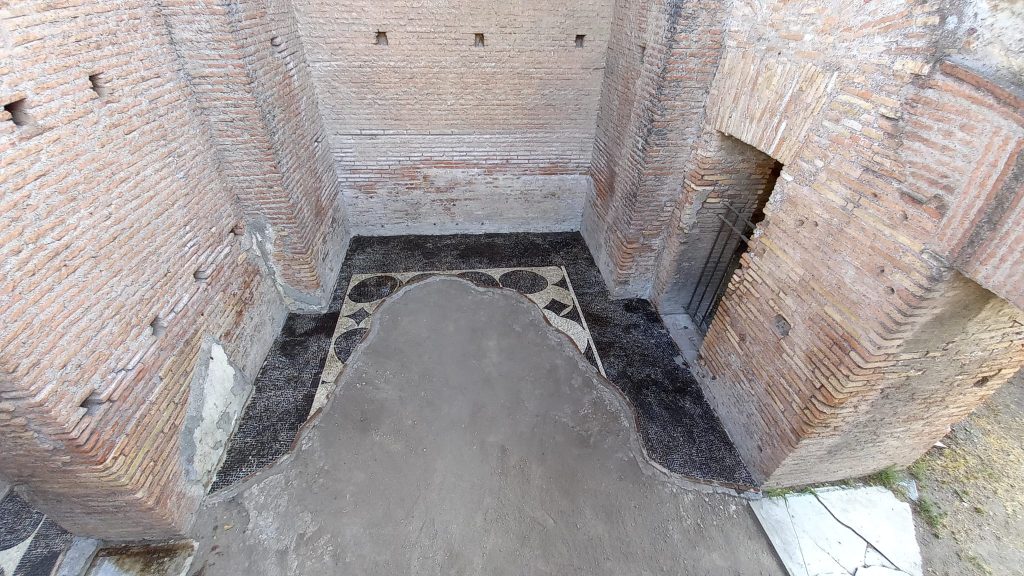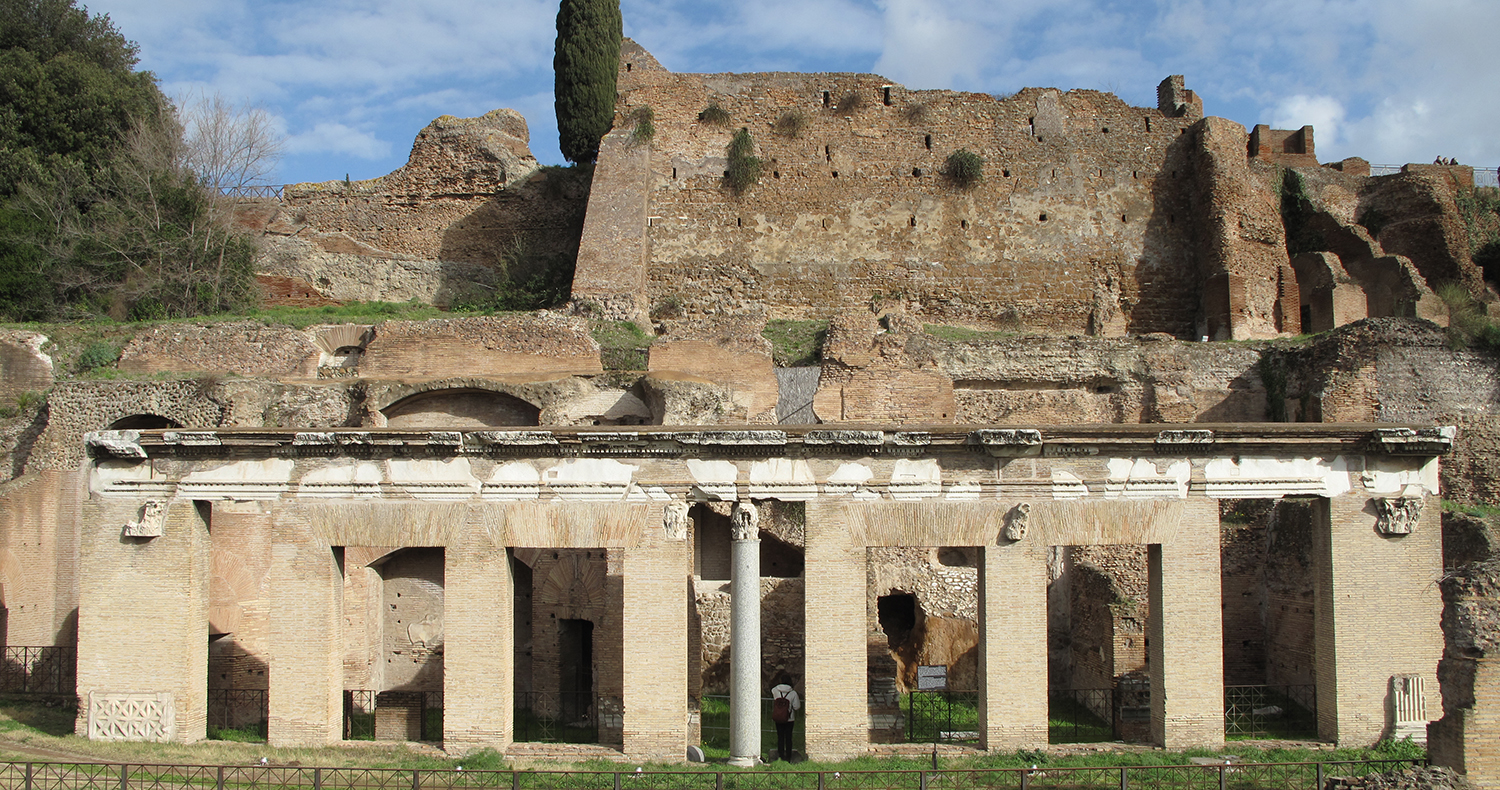During the winter season the route is closed to the public.
A journey through space and time—this is the adventure awaiting visitors on the path that winds along the southern and western slopes of the Palatine. All along the trail visitors can admire the majestic buildings that occupied the hill between the Flavian and Severan dynasties: the so-called Severan Arcades, the façades of the Domus Flavia and Domus Augustana, and the area of the Paedagogium (8), a training school for imperial pageboys, known for its wall paintings, scratched graffito images (the famous “blasphemous crucifix” graffito is conserved in the Palatine Museum) and for the black and white mosaics recently rediscovered and restored.

Palatine, southern slopes, the Paedagogium.

White plaster with graffito

Paedagogium, black and white Severan age mosaic (III cent. AD)

Pedagogium, black and white Severan age mosaic (III cent. A.D.)
From here the path continues, running alongside the Circus Maximus and bringing visitors to the southwestern slopes of the Palatine, where Romulus founded the Eternal City and where Augustus, first emperor of Rome, resided and spent most of his days. Visitors can access the external area of his house and private study.

Continuing along the western flank of the hill, visitors will come back down through time as they pass in the shadow of the Temples of the Magna Mater Cybele and of Victoria, the imposing Domus Tiberiana, and finally reach the medieval church of St. Theodor. After crossing the Horrea Agrippiana (grain storehouses), the tour takes up the last leg of the Vicus Tuscus and concludes at the entrance to the Roman Forum.
But the itinerary isn’t just archaeology: the path winds through one of the most evocative and untouched areas of central Rome, so close to the city yet so far from the hectic traffic of the capital. A pleasant stroll at times immersed in total silence, where rich vegetation and patches of trees, with their array of colors and fragrances, form a rich visual and olfactory frame that makes a visit to this one-of-a-kind archaeological area truly unforgettable.
During the winter season the route is closed to the public.

Map.


